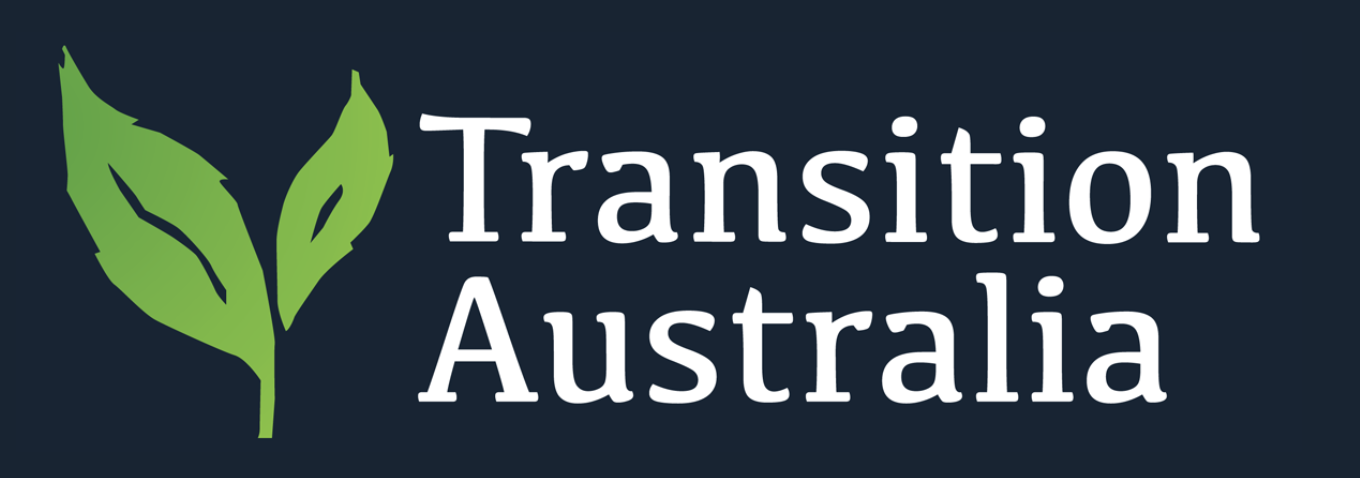The Black Cockatoo Pocket Forest is a project initiated by community group Transition Town Vincent (TTV) Our aim is to help
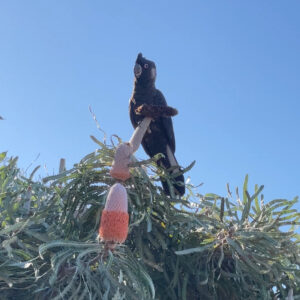
White-tailed black cockatoo feasting on Acorn banksia
inner city residents and others to transform their yards and courtyards into habitat for Black Cockatoos while creating a cooler, healthier and more sustainable living environment.
Our initial focus is on growing a demonstration Black Cockatoo Pocket Forest on a small area of land allocated to us by the City of Vincent adjacent to the existing Britannia Community Food Forest (opposite the new skate space off Britannia Road, Leederville).
The main planting day is National Tree Day on Sunday 27th July. To register as a volunteer with the project either as a planter or some other capacity email info@ttv.org.au with your name, phone number, number and age of volunteers.
Further information about the project is below.
Project NewsEventsOn Monday 14th July TTV will be showing the documentary Making a Mini-forest as one of our monthly movie nights. Dr Grey Coupland will follow the movie with information about the pocket forests program she has run with 17 schools in WA. Get more information and tickets here. Join us on Sunday afternoon 27th July from 10am for our planting of the inaugural Black Cockatoo Pocket Forest. We hope to have a Welcome to Country and Smoking ceremony and we hope to get Rex the Black Cockatoo along also. To register as a volunteer, see the information above. FundingNational Tree Day advised in early April that we were successful in our bid for a grant to fund the acquisition of plants for the Black Cockatoo Forest (loud cheer). The City of Vincent have advised that we have been successful in being allocated environmental grants for two projects:
International Pocket Forest organisation SUGi have also allocated funds to our project. Project briefings and short walking toursThere are regular project briefings and short walking tours associated with the Black Cockatoo Forest project on every second Sunday between now and the planting which is scheduled for National Tree Day on 27th July. These will occur at the existing Britannia community food forest as follows:
 Showing residents some of the trees to be planted in the Black Cockatoo forest
Please:
Contact Ian at ian.kininmonth@ttv.org.au to register your interest or just turn up. CompostingWe are co-composting biochar with food scraps e.g. coffee grounds, vegetable scraps with the aim of incorporating this into the soil (sand) just before planting day. A number of community members are involved with this. Main composting days and times are:
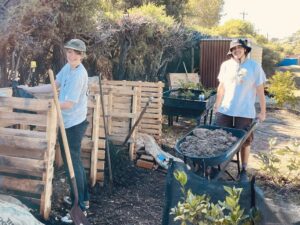 Co-composting with biochar for the Black Cockatoo forest |
Project information
Background
The origins of the Black Cockatoo Forest can be traced back to two events which TTV hosted in 2024. The showing of the documentary Black Cockatoo Crisis highlighted the plight of Black Cockatoo’s across south western Australia and in particular the ongoing loss of habitat and associated tree canopy cover in urban Perth. Subsequently some of our members heard Dr Grey Coupland talk on ABC radio and were so inspired we hosted Grey to talk to the local community about her program at our Pocket Forest’s for the Inner City event in September 2024.
The TTV My Healthy Soils Project then teamed up with Dr Grey Coupland to establish the Black Cockatoo Pocket Forest using the Miyawaki/Pocket Forest methodology which she has adapted to SW Western Australia conditions. Grey has been supported by the Murdoch University Harry Butler Institute in extending the program to about 17 schools in Perth over the last 5 years.
Project objectives
Specific objectives of the Black Cockatoo Forest project are:
- To provide residents and others with a local demonstration of how to restore above and below ground carbon and biodiversity with a focus on providing habitat for Black Cockatoo’s.
- To build the capacity for residents and others to restore soil carbon and biodiversity in inner city yards and courtyards.
The site will provide a local demonstration of how to restore above and below ground biodiversity and soil carbon using the principles developed by Dr Akira Miyawaki and adapted to Perth conditions by Dr Coupland. It will also provide a training ground for those residents and others who want to establish a pocket forest in their yard or courtyard as part of their My Healthy Soils Project. Pocket forests:
Three basic features of Miyawki/Pocket Forests:
- Plant locally native species
- Soil remediation
- Plant at a high density
Miyawaki Pocket Forests:
- Can be achieved with as little as 3 square metres of area
- Contain 3 to 5 native plants per square metre
- Reach maturity up to 10 times faster than traditional planting methods
Plant locally native species
In accordance with the Miyawaki methodology we will be planting locally native species. The location of the Black Cockatoo Forest is on an area which is part of the Spearwood soil-landscape system and the pre-settlement vegetation seems to have been a mix of Karrakatta vegetation complex and the Herdsman vegetation complex. The Karrakatta vegetation is represented by the type of vegetation found at Kings Park, about 2.5 kilometres away. There are many plant species in Kings Park which Black Cockatoo’s use for foraging and roosting.
Soil remediation
A key part of the Miyawaki methodology is soil remediation. This is done by making compost and using it to build up the soil organic matter and carbon before planting and colonising it with microbes from nearby bushland. A major point of difference to other Pocket Forests established in Perth will be the use of co-composted biochar in the initial soil preparation which will provide the resistant carbon e.g. charcoal and humus similar to that found in natural soils. The site will also be colonised with soil organisms (e.g. bacteria, fungi) from nearby bushland. In this way, restoration of the soil carbon and biodiversity will receive similar attention to the above ground carbon and biodiversity.
Plant at high density
We will be planting the forest at a density of 3 plants per square metre. This is quite a bit higher than normal landscaping practices but is lower than what you may find say at Kings Park. We will also be planting predominantly tree and shrub species as opposed to groundcovers or sedges/grasses. The purpose of this is to force the plants to compete for light which then forces growth upward. Along with the soil remediation, this results in high growth rates.
Schedule of activities
| Task | Status | Notes |
| Project plan | Done | |
| Site plan | Done | |
| Flora survey | Done | |
| Plant list | Done | |
| Soil analysis | To do | |
| Order/acquire plants | In prep. | |
| Prepare compost and biochar | In prep./Ongoing | Biochar being inoculated with compost |
| Source soil microbes | To do | |
| Planting day (National Tree Day 27/7/2025) | To do | |
| Monitoring | To do | |
| Communication plan | To do | |
| Prepare educational material | In prep./Ongoing |
Stage 2 planting 2026
We have received funding from the City of Vincent to purchase plants for Stage 2 of the project. Stage 2 will have two parts:
Part 1 – De-paving a 100 square metre area of bitumen about 100 metres away from the demonstration forest and near the Tools n Things library. The planting will occur in about June 2026.
Part 2 – In collaboration with local communities, establishing Black Cockatoo Pocket Forests in one or two other locations around the City of Vincent. This will involve establishing community composting hubs and potentially de-paving areas before planting.
If you are interested in participating please email us at info@ttv.org.au.
Volunteer
The planting day on 27th July is just the beginning of the project. Our main aim is to learn from this process and to empower the community in being able to establish more pocket forests on both public land across the inner city as well as on private land. To volunteer with this project or to be kept up to date with project news please email info@ttv.org.au
More information
For more information about pocket forests check out this website, video or listen to this podcast. This series of videos provides a very good overview of the process.
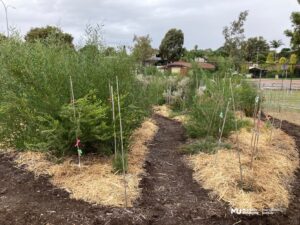
The Eddystone Primary School Pocket Forest site after 22 months
For further information contact ian.kininmonth@ttv.org.au
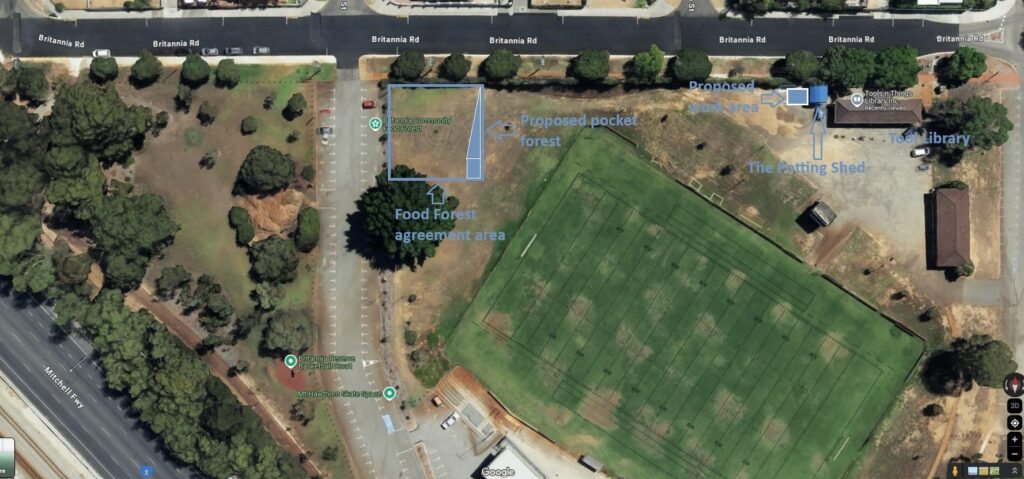
Location of the proposed pocket forest
#blackcockatooforest
